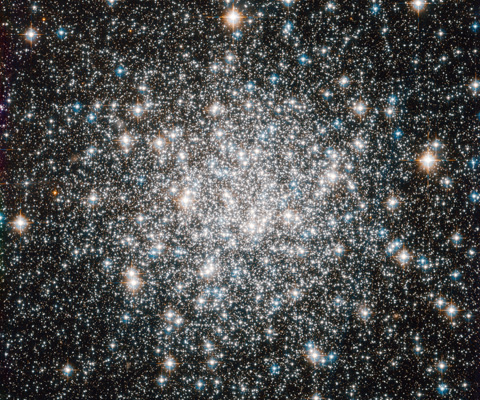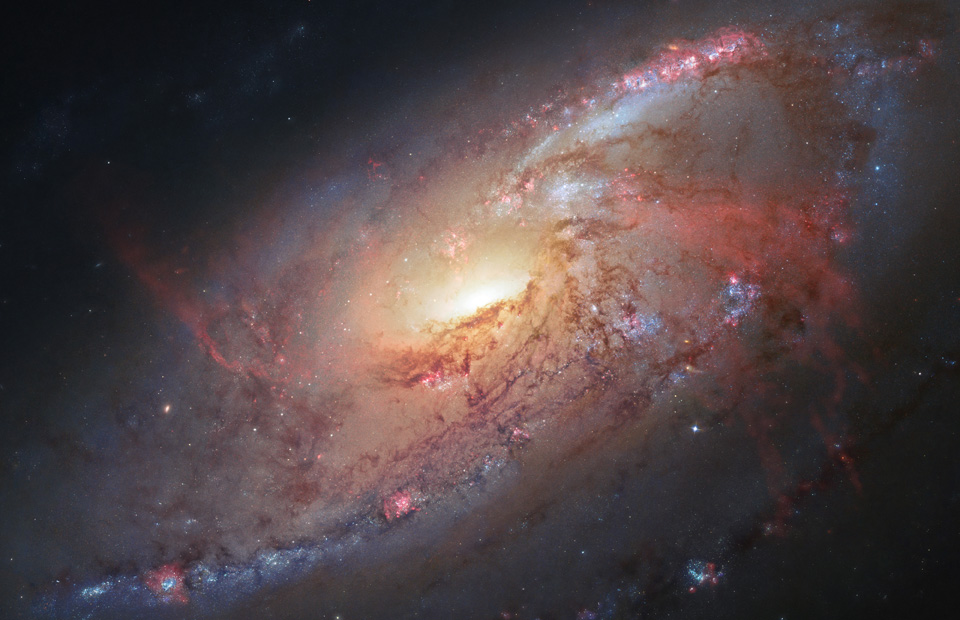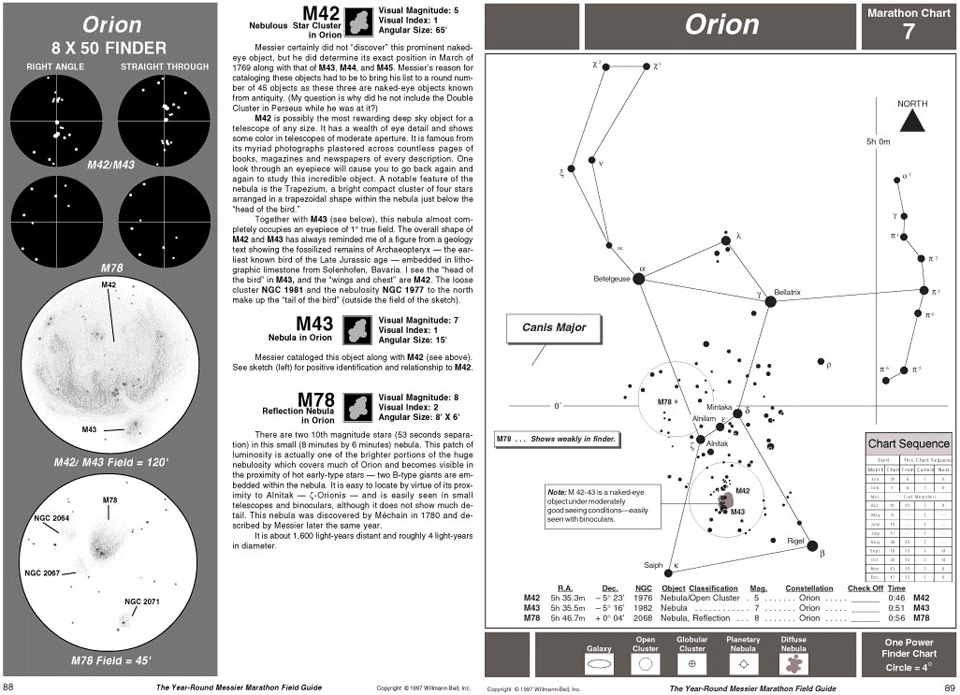Introduction
By no means complete, March’s mini guide that follows provides notes for exploring various interesting deep sky objects (DSOs) and lists other items of interest useful to the amateur astronomer.
Entries can be interpreted based on designation, description and magnitude as follows.
Designation – Description – Magnitude:
★ Telescopes 10-inch aperture minimum.
★★ Telescopes 6-inch to 9-inch aperture.
★★★ Binoculars (50mm+ aperture) and telescopes
3-inch to 5-inch aperture.
A collimated instrument, favourable atmospheric conditions, dark skies and dark-adapted eyes are assumed.

M68 globular cluster. Credit: ESA/Hubble & NASA.
About M68 globular cluster
The NASA/ESA Hubble Space Telescope offers this delightful view of the crowded stellar encampment called Messier 68, a spherical, star-filled region of space known as a globular cluster. Mutual gravitational attraction amongst a cluster’s hundreds of thousands or even millions of stars keeps stellar members in check, allowing globular clusters to hang together for many billions of years.
Astronomers can measure the ages of globular clusters by looking at the light of their constituent stars. The chemical elements leave signatures in this light, and the starlight reveals that globular clusters' stars typically contain fewer heavy elements, such as carbon, oxygen and iron, than stars like the Sun. Since successive generations of stars gradually create these elements through nuclear fusion, stars having fewer of them are relics of earlier epochs in the Universe. Indeed, the stars in globular clusters rank among the oldest on record, dating back more than 10 billion years.
More than 150 of these objects surround our Milky Way galaxy. On a galactic scale, globular clusters are indeed not all that big. In Messier 68's case, its constituent stars span a volume of space with a diameter of little more than a hundred light-years. The disc of the Milky Way, on the other hand, extends over some 100 000 light-years or more.
Messier 68 is located about 33,000 light-years from Earth in the constellation Hydra (The Female Water Snake). French astronomer Charles Messier notched the object as the sixty-eighth entry in his famous catalogue in 1780.
Hubble added Messier 68 to its own impressive list of cosmic targets in this image using the Wide Field Camera of Hubble’s Advanced Camera for Surveys. The image, which combines visible and infrared light, has a field of view of approximately 3.4 by 3.4 arcminutes.
Image credit: ESA/Hubble & NASA.
| March deep sky objects |
| Leo constellation |
|
M95
|
The M95, M96 and M105 form the Leo Galaxy Group. The M95 has a bright core surrounded by a granular halo. In dark skies the M95 may reveal its spiral structure.
|
11.0
|
★★
|
|
M96
|
The M96 and M95 can be seen in the same field of view in binoculars or at low magnifications in instruments. It shows a bright extended core with a stellar nucleus.
|
10.5
|
★★
|
|
M105
|
The M105 has a bright core that fades towards its edges. At the centre of the galaxy lies a heavy object 50 million times the mass of the Sun.
|
11.0
|
★★★
|
|
NGC3384
|
Elliptical galaxy in the M105’s vicinity.
|
10.2
|
★★
|
|
NGC3389
|
Spiral galaxy in the M105’s vicinity.
|
12.5
|
★★
|
|
M65
|
Spiral galaxy that along with the M66 and NGC3628 form the Leo Triplet. A 12-inch instrument is required to observe any detail.
|
10.5
|
★★★
|
|
M66
|
A spiral galaxy with a bright star-like nucleus. Some detail will be seen in a moderate size instrument.
|
10.0
|
★★
|
|
NGC3628
|
Spiral galaxy in the Leo Triplet. A 10-inch is needed to see all members of the Triplet.
|
10.9
|
★★
|
|
NGC3190
|
Faint galaxy surrounded by a group of equally faint galaxies including the NGC3193, NGC3185 and the rather faint NGC3187.
|
11.3
|
★
|
|
NGC3651
|
Galaxy in the centre of a group of galaxies that includes the NGC3753 and others.
|
15.3
|
★
|
|
NGC3753
|
Spiral galaxy.
|
14.5
|
★
|
|
NGC3825
|
Barred spiral galaxy.
|
13.7
|
★
|
|
NGC3822
|
Spiral galaxy.
|
13.8
|
★
|
|
NGC3521
|
Spiral galaxy that shows a bright core in small instruments. Large instruments and CCD cameras will reveal a wealth of detail.
|
10.0
|
★★
|
|
NGC3810
|
Spiral galaxy within the reach of an 8-inch instrument.
|
10.8
|
★★
|
| Ursa Major constellation |
|
M109
|
Barred spiral galaxy. Small instruments will show a bright core and elongated halo.
|
11.0
|
★★
|
|
NGC3953
|
Barred spiral galaxy close and similar to M109.
|
10.7
|
★★
|
|
NGC3079
|
Galaxy close to the Double Quasar 0957 + 561A/B. Mottling becomes evident in 10 inch instruments.
|
11.2
|
★★
|
| Coma Berenices constellation |
|
NGC4565
|
Edge-on galaxy and one of the brightest in the Coma I Galaxy Cloud. Visually it appears as a long streak of light with a bright centre and with a prominent dark lane running across its length. Its dark lane is better resolved in large instruments and by CCD cameras.
|
9.6
|
★★★
|
|
NGC4175
|
Part of The Box (Hickson61) this is an elongated galaxy.
|
14.2
|
★
|
| Covus constellation |
|
NGC4038
|
One of a pair of interacting galaxies known as the Antennae. As it stays low in the sky an 8 or 10-inch instrument is required to observe this galaxy.
|
11.5
|
★★
|
|
NGC4039
|
Along with the NGC4038 they present a unique site. A 20-inch instrument will show the twisted tails that make the Antennae so distinct. Photographing the Antennae can be rewarding and will require a 10-inch instrument, a CCD camera and long exposures.
|
11.0
|
★★
|
|
NGC4361
|
Planetary nebula that is difficult to discern due to its low position in the horizon.
|
10.8
|
★★
|
|
NGC4782
|
Paired with the NGC4783 these two interacting galaxies will appear as a small and faint patch of light.
|
12.3
|
★★
|
|
M68
|
Globular cluster low in the sky, viewable but unresolved in binoculars. Instruments will reveal its mottled core and resolve the stars in its periphery.
|
9.0
|
★★★
|
| Canes Venatici constellation |
|
M106
|
A large, bright galaxy visible through binoculars. Large instruments will reveal two spiral arms extending from the core to its peripheral halo. CCD cameras will capture bright blue star concentrations at the ends of the spiral arms.
|
9.50
|
★★★
|
| Crater constellation |
|
NGC3962
|
A galaxy surrounded by a number of other fainter galaxies.
|
11.3
|
★★
|
| Virgo constellation |
|
M104
|
The Sombrero Galaxy is a nearly edge-on galaxy with a large bright core and a dark lane that runs across its length cuts the galaxy in two. This galaxy takes magnification well and small instruments will show both its core and pointed ends.
|
9.50
|
★★★
|
|
NGC4697
|
An elliptical galaxy with a less noticeable core.
|
10.5
|
★★
|
|
|
Designation, Description, Magnitude
|
★ Telescopes 10-inch aperture minimum.
★★ Telescopes 6-inch to 9-inch aperture.
★★★ Binoculars (50mm+ aperture) and telescopes 3-inch to 5-inch aperture.
|
The night sky
Under excellent conditions over 2,000 stars can be seen with the unaided eye but only a few hundred of these are prominent enough to be useful in navigating the night sky, these are normally included in amateur sky maps and digital planetarium programs like the SkySafari, Stellarium, The Sky, Starry Night, Winstars 2 etc. Some stars will show colour that is useful in identifying them. For example, Antares, Betelgeuse and Aldebaran are orange/red where Vega, Rigel and Spica appear as blue/white.
Stars that form easily recognisable patterns have been given names and are referred to as constellations. Of these, the brightest stars act as beacons and can be used to effectively navigate the night sky during the different months of the year. To that extent stars can be particularly useful in locating other interesting objects nearby normally viewable through binoculars or larger instruments.
Planets and their satellites, comets and meteors move independent of the night sky background and at comparatively high speeds. They are therefore very difficult or impossible to reference to any star. However, planets like Jupiter, Saturn, Venus and Mars as well as the Moon are easy to spot with the unaided eye and in the case of the larger planets and especially the Moon, even medium size binoculars will reveal a limited degree of detail.
M106 spiral galaxy

M106 galaxy. Credit: NASA, ESA, the Hubble Heritage Team (STScI/AURA), and R. Gendler (for the Hubble Heritage Team). Acknowledgment: J. GaBany.
This image combines Hubble observations of Messier 106 with additional information captured by amateur astronomers Robert Gendler and Jay GaBany. Gendler combined Hubble data with his own observations to produce this stunning colour image.
Messier 106 is a relatively nearby spiral galaxy, a little over 20 million light-years away.
Image credit: NASA, ESA, the Hubble Heritage Team (STScI/AURA), and R. Gendler (for the Hubble Heritage Team). Acknowledgment: J. GaBany.
Sky conditions
The prevailing sky conditions will have a significant effect on what you can see through any instrument and binoculars. As such if you live near a city the light pollution can make it difficult to locate and observe most DSOs. The Moon and a hazy sky will also have a negative effect.
For best results observe from a dark site and under clear transparent skies without the moon being present. Once your eyes have been accustomed to the dark conditions (this takes around 20-30 minutes) you should be able to enjoy the night sky at its best.
Filters
Filters will help to an extent and lager instruments will benefit more from them. Light pollution filters would help and photo-visual UHC (nebula filters) would be worth considering.
Printed aids
A huge number of printed aids exist in terms of deep sky maps and books. An excellent printed guide for people new in astronomy is The Year-Round Messier Marathon Field Guide published by Willmann Bell Inc.
In this large format hard-back book, the author, Harvard Pennington shows how to:
- Learn 17 bright finder stars and 17 prominent finder constellations so you will know where to look for all 110 Messier objects.
- Align a sighting device such as an 8x50 finder scope or the Telrad® so that you can point your instrument rapidly and with assurance toward all of the Messier objects.
- Calibrate your instrument so that you know exactly how much sky you see through your finder and through the eyepiece of your instrument.
- Find all of the Messier objects using the maps, drawings and descriptions in this book. You will know exactly where to point your instrument, and what the object should look like when you find it.

Extract from The Year-Round Messier Marathon Field Guide
published by Willmann Bell Inc.
Related topics:
night sky, deep sky object guide, March



